September 1-12, 2008
Summary: I return to Bahia from a reverse culture-shock laden vacation to the United States. While I was gone, Jaime held down the fort and was fortunate enough to receive a heavy rain thus saving him from having to water (alone). Despite the lack of volunteer forces, Jaime and I persevere. The rain while I was gone appears to have been a fluke and we are required to resume watering, though a change to cooler climate has made this task somewhat less pressing. Additionally we begin planning new revegetation sites that will be planted when the rainy season starts. Several seed beds that were planted in the greenhouse before I left have germinated and the baby trees need to be transplanted. And we even manage to squeeze in some seed collection.
The weather is distinctly different upon my return. There has been a very noticeable shift to what is considered typical dry season weather. It is cooler, cloudier, and breezier. Sometimes there is an occasional drizzle, but rarely a downpour. The sun tends to only peak through the clouds from time to time and is hardly the intense equatorial sun that is characteristic of the rainy season. This is good for the plants, they can maintain without being completely dried up by the scorching sun. This period of milder weather is what allows plants in this region to survive the 8-9 month long dry season.
On the first day back to work Jaime and I take a walk up to the San Roque neighborhood in Bahia to talk to a local resident about the possibility of a revegetation project there. She had come to us to ask about tree planting last year. She was happy to show us around and pointed out various locations on the hillside where it would be strategic to plant trees. There is also the possibility of beginning compost collection so that local residents can produce fertilizer for the trees and use in their own gardens.
From there Jaime and I head to the lower section of Bellavista in Bahia where we are exploring the possibility of another new site. There are some good options and a nearby municipal water tank. We also met with Vladir of Genesis Net and Elementary School about the option of planting trees across the street from his school. Afterwards I return home to catch up on some emailing and to do some tidying up around the house.
On Tuesday we take the bus to Saiananda and meet with the owner, Alfredo Harmsen. Saiananda is a like a funky zoo with a variety of caged animals and Alfredo runs a very progressive elementary school, Sathya Sai nearby. We discuss the possibility of planting a revegetation site somewhere near the school. Alfredo is excited to get the school kids involved, but there are some pretty major hurdles that will have to be straightened out before we can move forward, including the issue of water, since the school is already pushing the limits of their supplies.
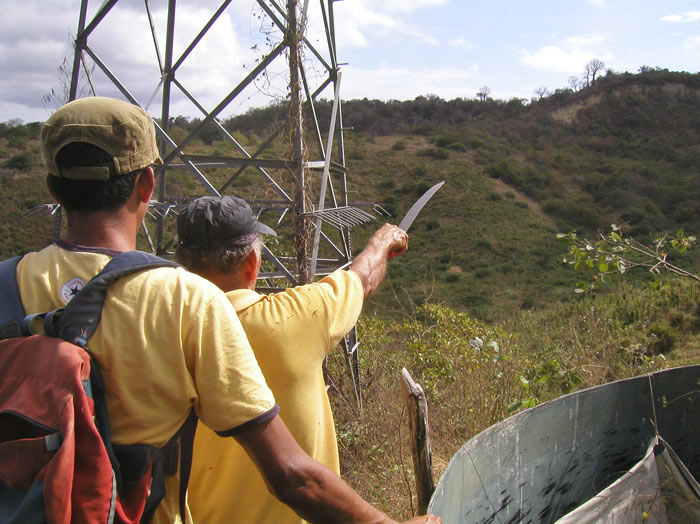
Exploring the grounds behind the Sathya Sai school with the custodian.
After meeting with Alfredo we walk to the greenhouse and do some weeding and cleanup.
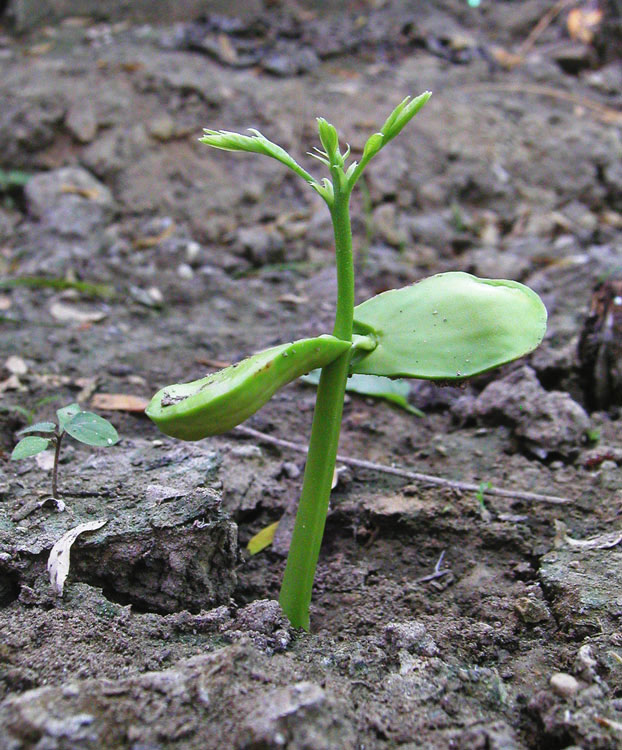
Wednesday we’re back at the greenhouse. I cut a slew of 3-liter bottles and Jaime does more clean up and fixing up.

Clay watering the seedbeds in the greenhouse.
On Thursday we water the Tamarindos site and then walk over to the Jorge Lomas neighborhood in Leonidas Plaza to investigate new site possibilities.
We find one site option on a hillside behind some houses. A local resident says that we would be able to use water from her cistern to water the trees. Despite thick brush, there is serious erosion and very poor soil quality. It’s an excellent possibility for Planet Drum revegetation.

While in the area, we discover another option on the other side of the hill, above a different neighborhood. The hill has probably been clear cut in the recent past and there’s a couple years worth of re-growth, but not much else. We chat up one of the neighborhood families and secure another potential water source in exchange for the promise of a couple Pechiche trees.
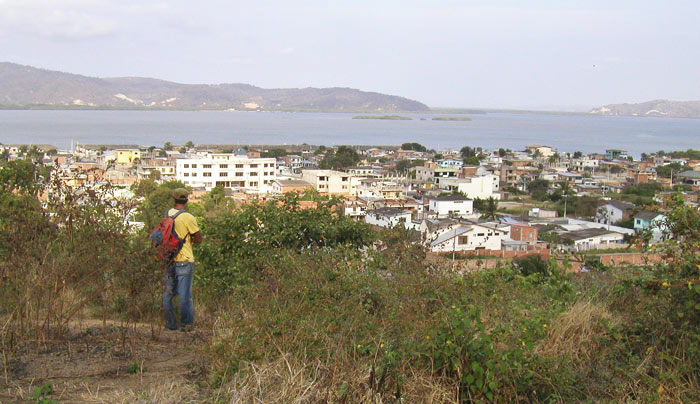
On Friday we water the Granja site and then water the greenhouse and its extension.
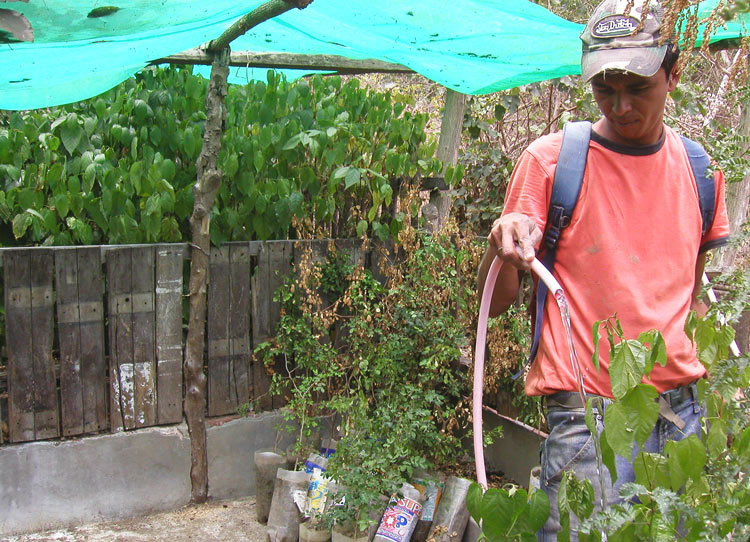
Jaime waters the trees at the greenhouse extension.
Saturday Jaime and I attend a neighborhood meeting previously planned with a contact in the San Roque neighborhood in Bahia. To our surprise, a room full of a dozen or so women has shown up. I present Planet Drum and talk about the interest we have in starting a revegetation project in their neighborhood. They are all quite interested and supportive. Obviously they are aware of the risk posed to their houses by erosion; the entire neighborhood is located on a steep hill. People express interest in allowing us to plant in a few barren areas around the neighborhood and possibly in planting trees in their own backyards as well. I offer 50 or so Pechiche and a couple dozen Chirimoya plants for personal planting in addition to what we will plant. Residents will have to put in a request to the community leader to receive the plants.
We also discuss the possibility of beginning a locally operated garbage separation program, where houses will dispose of their organic waste in a communal compost pile. The compost produced would then be used for the trees and in residents’ gardens. Planet Drum would help with the technical assistance of beginning the composting project, but the residents themselves will have to be actively participating to keep it going. The compost pile would actually be closer than the street where residents currently have to take their garbage. It will be interesting to see if this pans out.
On Monday Jaime and I water the Don Pepe revegetation site. While there we notice that some Bototillo seed pods are beginning to open on some of the trees nearby. We find a long Bamboo pole and begin collecting. A couple dozen seed pods are knocked down from three different trees.
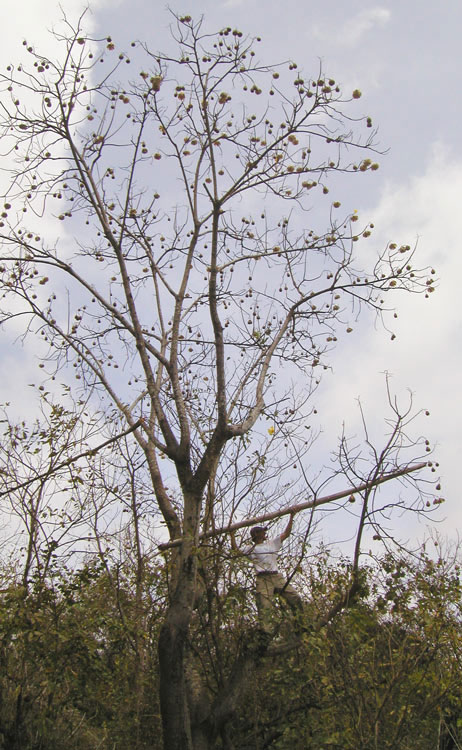
Clay up in the Bototillo tree with a Bamboo tube knocking down seed pods.
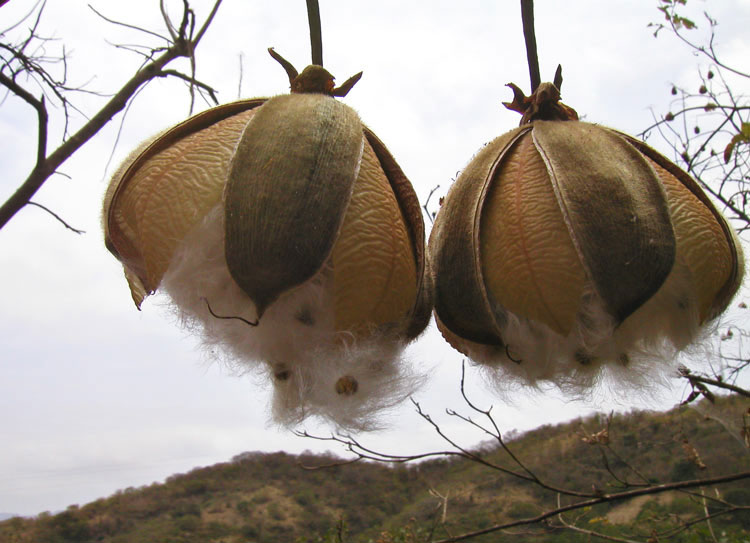
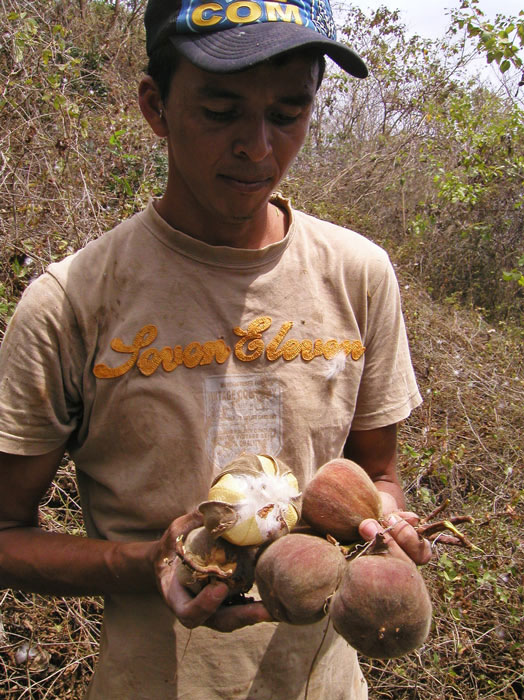
Tuesday we go to the greenhouse and water the revegetation site behind the University. Afterwards, I cut more bottles and Jaime does more clean up.
Wednesday we water the Astillero site. A nice looking Jaboncillo tree is laden with seeds.

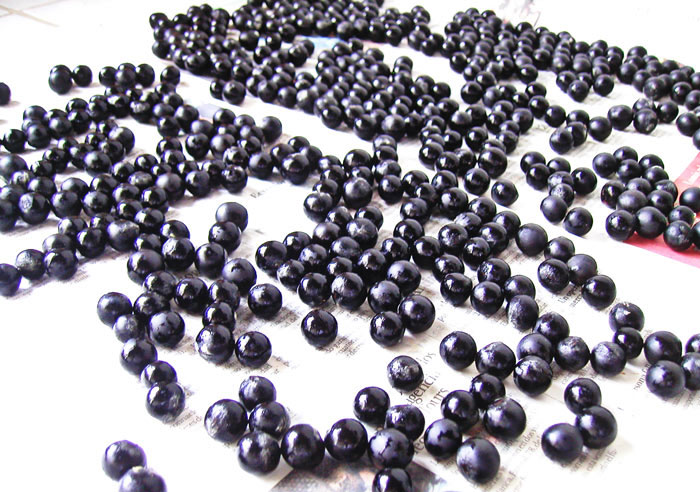
Thursday we water the La Cruz and Ruinas sites. Once back at the house we finish preparing the rest of the Jaboncillo seeds for storage.
On Friday we go to the greenhouse and prepare a large batch of soil for putting into bottles when transplanting trees from the seed beds. Before we can begin transplanting, we get a call from our friend Afranio who offers to take us on a trip to the town of San Jacinto to collect Ceibo seeds. Ceibo trees do not produce seeds every year, and this year we still haven’t seen a single Ceibo tree around Bahia that is seeding and it’s getting late in the season for collection. As a result, we end up taking a field trip to collect seeds a few kilometers away.
Just past San Clemente and San Jacinto is a pueblo called Santa Teresa. There are clusters of very large Ceibo trees visible from the road, many have seed pods that are already opened and the white cotton from the seed pods is strewn across the ground. We enter one property and ask permission from the owner to collect seeds. He tells us to go farther in and look for seeds there. After a short walk we get to a cluster of Ceibos, in the middle of which is the largest Ceibo that any of us have ever seen.
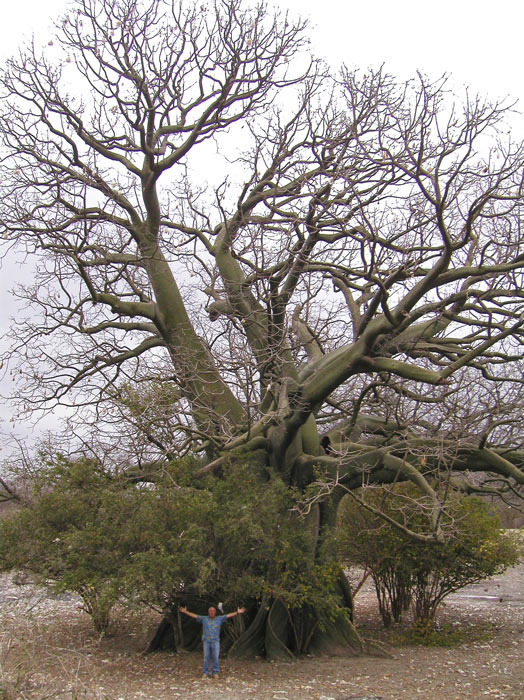
Don Afranio poses in front of an enormous Ceibo tree.
We gather seeds from many of the Ceibos, including the enormous one. We knock down unopened seed pods from the low hanging branches and pick up the whitest looking pods that have already fallen on the ground.
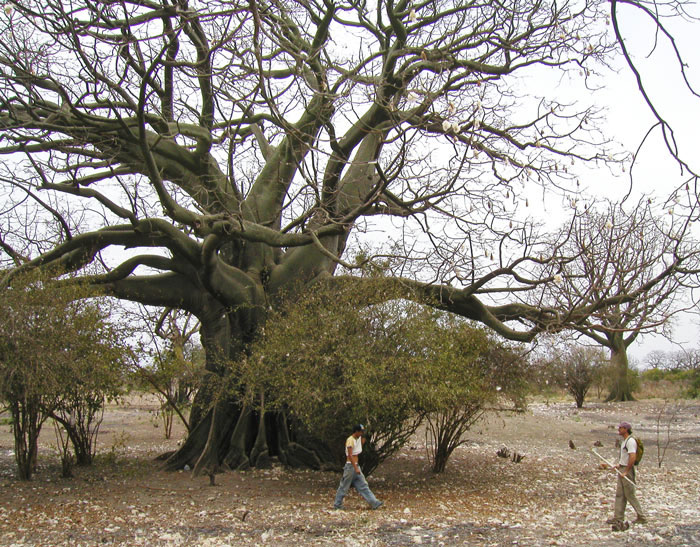
The seeds in the unopened seed pods don’t look ready yet, but hopefully as they dry out they will ‘finish’ without being on the trees. The cotton inside the seed pods is incredibly soft and traditionally was used to make pillows and even mattresses, a practice that could be revived as an ecological small industry. A couple sacks full of cotton and seed pods are gathered before we return home.
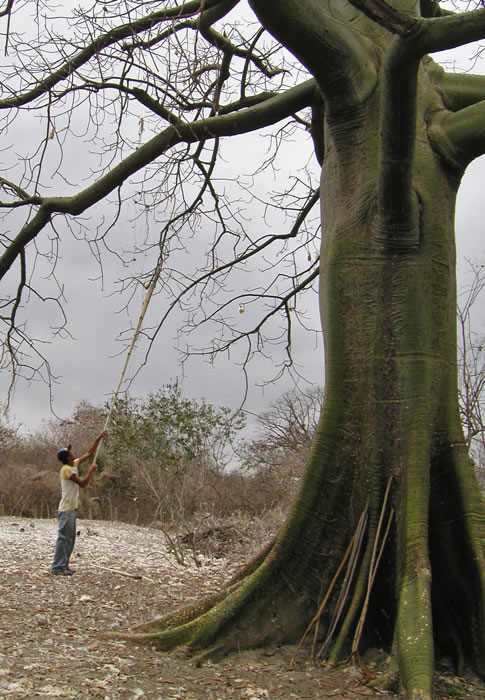
Jaime knocks Ceibo seed pods off of the branches. Note seed “cotton” on the ground.
Pásalo bien,
Clay

Thanks for sharing. I read many of your blog posts, cool, your blog is very good.
Your article helped me a lot, is there any more related content? Thanks!
Thank you for your sharing. I am worried that I lack creative ideas. It is your article that makes me full of hope. Thank you. But, I have a question, can you help me?
Can you be more specific about the content of your article? After reading it, I still have some doubts. Hope you can help me.